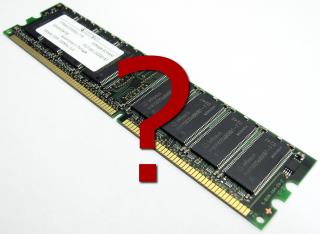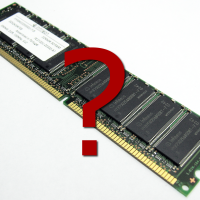One of the main considerations that is taken when purchasing a new Windows computer is how much RAM should the computer contain? As with everything else in technology the answer is usually “it depends.” Most computers sold today seem to have at least 4GB of RAM, which is more than enough for most people. For those that are into video or photo editing, then having more will definitely help.
When it comes to gaming, which seems to be pushing the graphics technology, it may not matter if you have 4 GB of RAM or 12 GB. The reason comes down to how the actual game is developed and the operating system. As with many things in life, there are limits that will have an effect on how much RAM you may actually need, and be using.

Virtual Address Space
On a Windows system, even if you have 24 GB of memory installed, an application may not be able to utilize all of that memory. In fact, depending on your system, a single application may not be able to use more than 2 GB of memory. The reason has to do with the Virtual Address Space of a process.
The Virtual Address Space is the set of virtual memory addresses (a combination of physical RAM and the pagefile) that a single process can use. The virtual memory address space for a process is private, which means it can’t be used by another process.
The limits for a process’ virtual address space are shown in the table below:
| Memory Type | X86 Limit | 64-bit Limit |
|---|---|---|
| 32-bit Process | 2 GB
Up to 3 GB with IMAGE_FILE_LARGE_ADDRESS_AWARE and 4GT |
2 GB with IMAGE_FILE_LARGE_ADDRESS_AWARE cleared (default)
4 GB with IMAGE_FILE_LARGE_ADDRESS_AWARE set |
| 64-bit Process | Not applicable | With IMAGE_FILE_LARGE_ADDRESS_AWARE set (default):
2 GB with IMAGE_FILE_LARGE_ADDRESS_AWARE cleared |
As you can see the limits on a 32-bit process running on a 32-bit system is 2 GB. This means that each process can access more than 2 GB for its virtual address space. For a 64-bit application running on a 64-bit computer, the virtual address space for each process increases to 8 TB.
Knowing the virtual address space for an application is important – especially for games. Some games allow you to install mods (modifications that can change the look and playability of the game), and with too many mods it could cause the game to go beyond the limits of the virtual address space. When this happens the game will crash.
Windows Memory Limitations
Outside of the virtual address space, which is not how much physical RAM can be used by a process, is the fact that each version of Windows has a limit to the amount of RAM it can utilize. The memory limit for each version of Windows depends on whether the computer is 32-bit or 64-bit.
The following table shows the memory limits for the Windows versions that are commonly found on home computers:
| Version | X86 Limit | 64-bit Limit |
|---|---|---|
| Windows 7 Ultimate | 4 GB | 192 GB |
| Windows 7 Professional | 4 GB | 192 GB |
| Windows 7 Home Premium | 4 GB | 16 GB |
| Windows 7 Home Basic | 4 GB | 8 GB |
| Vista Ultimate | 4 GB | 128 GB |
| Vista Home Premium | 4 GB | 16 GB |
| Vista Home Basic | 4 GB | 8 GB |
| Windows XP | 4 GB | 128 GB |
The above table doesn’t list all versions of the Windows operating systems, but I just wanted to show the more commonly installed versions on a home computer.
As you can see from the above table, each version of the Windows operating system has a memory limit. On 32-bit computers, the limit is 4 GB. For 64-bit systems, the limit is dependent on the version of the operating system. For the most part, the 64-bit memory limit probably exceeds the total RAM installed on most computers.
Now what does this have to do with how much RAM you will need installed? Well, if you decide to stay with the 32-bit version of Windows XP, then you won’t be able to access more than 4 GB of RAM. Even if the chipset on your motherboard allows more than 4 GB of memory, your operating system will only be able to use 4 GB of that memory.
If you use 64-bit Windows 7 on a 64-bit system with 24 GB of RAM, then your operating system will be able to utilize all the memory that you install. While this may seem great, how much of that memory can be used by an application is dependent on how that application was developed.
For example, an application such as Photoshop, which is 64-bit, will have a virtual address space of 8 TB, so it can utilize most of the installed RAM for it’s virtual address space, mean it will use the pagefile less.
Games, however, are a different story. Most games are still 32-bit, even if they are installed on a 64-bit system, so the most each game will be able to access is 4 GB of virtual address space (total memory and pagefile). This is important to remember if you plan on installing 16 GB just for a game. The game won’t take advantage of all that RAM because of the virtual address space limitation.
Of course, if you like to load many applications at one time, then having more memory installed will greatly improve the performance of your computer as there will be less need to use the pagefile.
There is no one-size-fits all scenario when it comes to how much RAM you should have installed in your computer. The amount of RAM you will need depends on what you will doing on your computer, the type of computer (32- or 64-bit) and the operating system that is installed.
